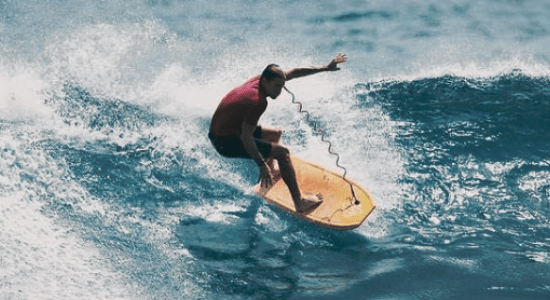Bodyboards can be made of several different materials: polystyrene foam, wood, and fiberglass. Each material has its own properties that make it a good choice for certain types of surfing. Polystyrene boards are lightweight and inexpensive but they don’t stand up well to pressure from waves or collisions with other surfers. Wood is heavy and expensive, but it’s durable so you won’t need to replace it as often. Fiberglass is the most popular type because it combines the best qualities of both materials (lightweight like polystyrene boards but durable like wood). We’ll look closer at how each bodyboard type performs in various conditions below!
Bodyboard types
Polystyrene boards
These are the lightest and cheapest options, but they won’t stand up to waves or collisions as well. we do not recommend this board for heavy surf because of their flimsy nature.
Polystyrene boards are best for beginners because they’re inexpensive and light, which makes it easier to catch waves. The downside is that they don’t stand up well under pressure from other surfers or rough conditions in the water, so you’ll have to replace them more often than wood or fiberglass boards. They can be good for small children who might not take as much care with their equipment but adults should go with either a wood or fiberglass bodyboard instead.
Pros:
- lightweight and inexpensive, but doesn’t stand up well to pressure from waves or collisions with other surfers.
Cons:
- Polystyrene boards are great for beginners who plan on surfing close to shore but the material doesn’t withstand a collision with other people very well.
Wooden boards
wood is heavier than polystyrene foam so it can be difficult to carry in a backpack on long journeys, but it’s durable which means you don’t need to worry about replacing it often like with other materials. The downside of wooden bodyboards is that they can be expensive because the material itself isn’t common – only around 12% of pro riders use them!
Pros:
- heavy duty against collisions and erosion by saltwater waves (polystyrene tends to break down when exposed to a lot of sun and saltwater). These boards also last longer so you won’t need to replace them as often.
Cons:
- heavy so it’s tough to maneuver and use for beginners
Fiberglass boards
Fiberglass uses an epoxy resin mixed with glass fibers to create a lightweight and durable board. This means it can withstand tough conditions, but because of the glass fibers it is more expensive than other materials
surfers who don’t want to spend much money but still want something durable that will stand up well under pressure from other surfers or rough conditions in the water.
Pros:
- Fiberglass is lighter than wood boards
Cons:
- Fiberboard can be too stiff or heavy for some people, which makes it difficult to catch waves with this type of bodyboard.
Carbon fiberboards
Carbon Fiber uses a resin mixed with carbon fabric to create a strong board without being heavy. They’re also environmentally friendly as they don’t require toxic elements like epoxy resins or polystyrene foam in their construction! The downside? Typical carbon fiber boards are on average $300 – 400 USD which makes them much pricier than most options listed here. It might be worth saving up for one if you plan on doing serious bodyboarding though given how great these boards perform overall!
foam boards
Foam boards are made of polystyrene foam and they’re usually light in weight. It’s not as strong against rough conditions like saltwater waves so the board will need to be replaced more often than wood or fiberglass. we recommended this board to children who don’t take care of their equipment.”
Polyethylene board
Polyethylene boards are made of polystyrene foam and they’re usually heavy. This is good for beginners because anyone can catch a wave with this type of board. But it’s not as strong against rough conditions like saltwater waves. So you have to replace this board more often than wood or fiberglass. Adult and children can use polyethylene board.
“If you want something that stands up well under pressure from other surfers or rough water then either a wooden board or a fiberglass bodyboard would work better.”
There are several types according to its core. The different bodyboard core has different purposes. you should choose the core according to your climate. for example, polyethylene core is for cold water, and polypropylene core is for warm water
Besides you need to check the bodyboard size chart to make sure it fits.
Video: How a bodyboard is made?
As you can see, there are many different types of bodyboards and each one has its own strengths and weaknesses depending on what type of surfing you’re planning to do. For beginners who want something light but durable that will stand up under pressure or rough conditions, a fiberglass board is the best choice because it combines the good qualities of both polystyrene boards (lightweight) and wooden boards (more durable). Wooden boards last longer than polystyrene ones since they don’t break down as quickly when exposed to saltwater waves, but they’re more expensive so this might not be practical for some people. If price isn’t an object, then wood is probably going to be your best bet if durability is important.
Conclusion:
We’ve all heard the expression “Different strokes for different folks.” It seems that this phrase rings true in bodyboarding too, as there are many types of boards available to suit a variety of needs and preferences. So, if you’re looking to buy your first board or just want an upgrade from what you already have, it’s important to choose wisely because not all bodies will be compatible with one type of board over another. If you need help deciding which is right for you, leave us a comment below!



